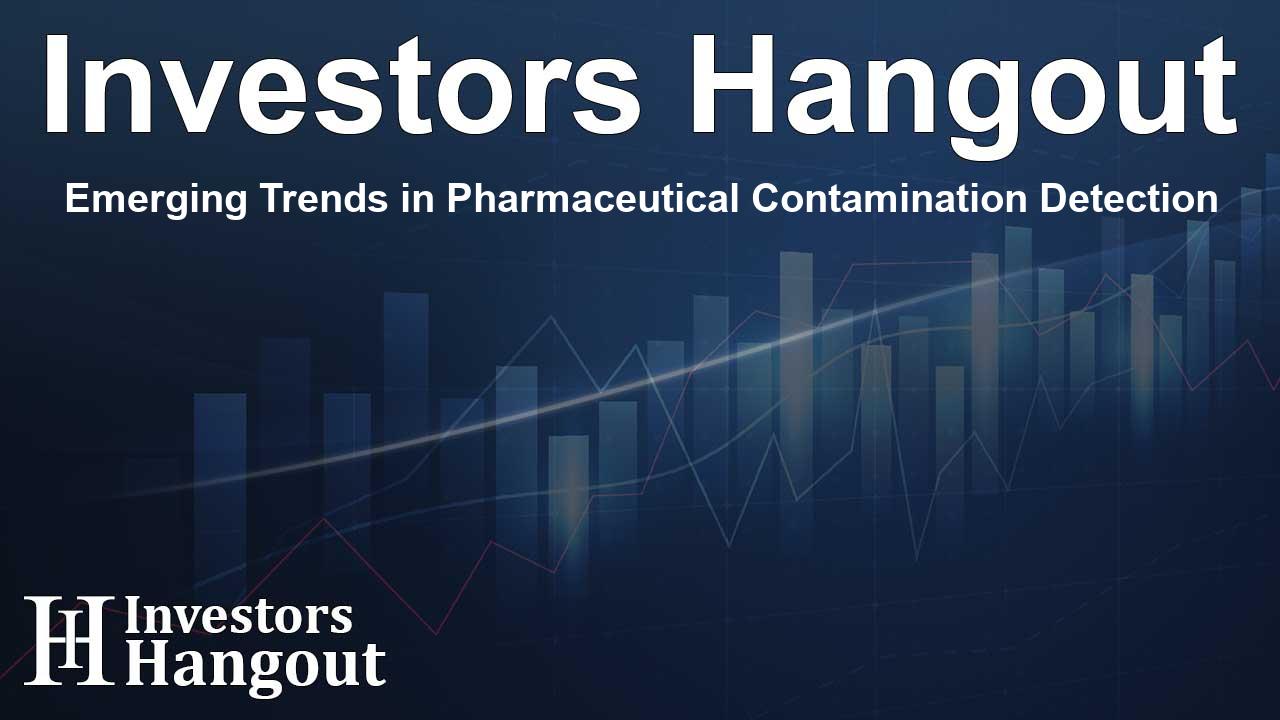Emerging Trends in Pharmaceutical Contamination Detection

Overview of Contamination Detection in Pharmaceuticals
The contamination detection in pharmaceutical products market is witnessing significant advancements, projected to experience robust growth in the coming decade. This growth is largely driven by the need for strict regulatory compliance, an increase in drug recalls, and major investments in sophisticated quality control systems. With the rise of innovative analytical technologies, including real-time monitoring and rapid microbiological methods, pharmaceutical safety standards are being significantly enhanced.
Market Drivers for Contamination Detection
Several factors contribute to the growing demand for contamination detection solutions within the pharmaceutical industry. Stringent regulatory guidelines imposed by health authorities are pushing manufacturers to adopt more comprehensive contamination controls. The global need for high-quality pharmaceuticals is further amplified by ageing populations and the spread of chronic diseases, leading to increased production of drugs and biologics.
Regulatory Influence
Government agencies around the world have established rigorous standards that require pharmaceutical companies to implement advanced contamination detection methods. This compliance ensures that all pharmaceutical products reach consumers safely. Innovations in technology also play a significant role, as AI and automated systems improve detection accuracy and speed, ensuring that any contaminants are promptly identified.
Technological Advancements
With rapid advances in technology, the pharmaceutical industry is benefitting from enhanced contamination detection systems. Spectroscopy and chromatography are key detection technologies currently utilizing significant market share. Processes like Process Analytical Technologies (PAT) are becoming increasingly critical for real-time evaluation of contamination impacts, ensuring quicker turnaround times from production to market.
Market Trends and Predictions
As trends evolve, several focal points are emerging within the contamination detection landscape:
- Advanced Detection Techniques: Manufacturers are investing heavily in sophisticated analytical methods to detect even the most minute traces of contaminants, crucial for ensuring drug safety.
- Increased Focus on Biologics: The production of biologics and personalized medications creates new challenges for contamination control, necessitating more rigorous testing regimes.
- Rapid Testing Methods: The ongoing development of rapid testing methods provides quicker results, which are essential for maintaining compliance and ensuring consumer safety.
Regional Insights
North America currently dominates the contamination detection market due to its strong pharmaceutical base and stringent regulations. The FDA's emphasis on drug quality and safety propels advancements in contamination testing technologies. Meanwhile, the Asia-Pacific region is emerging as the fastest-growing market, backed by substantial investments in pharmaceutical manufacturing and stringent quality control measures.
North America's Dominance
In 2024, North America is predicted to hold a substantial market share, primarily due to a combination of a solid pharmaceutical industry and tight regulatory frameworks. This focus on compliance drives demand for innovative contamination detection solutions across pharmaceutical enterprises.
Growth in the Asia-Pacific Region
The Asia-Pacific market is expected to grow rapidly from 2025 to 2035. The surge in regional pharmaceutical manufacturing, particularly in countries like India and China, is creating a robust marketplace for contamination detection technologies. Enhanced quality control standards in this region will further foster growth as manufacturers seek compliance with international guidelines.
Key Takeaways and Future Outlook
The landscape of contamination detection within the pharmaceutical industry is changing rapidly, driven by innovations in technology and increasing regulatory requirements. As companies continue to prioritize patient safety and product efficacy, the market for contamination detection is expected to expand significantly in the next decade.
With ongoing advancements, stakeholders in the pharmaceutical sector should remain adaptive to changing regulations, technological innovations, and market dynamics to ensure they stay ahead in these increasingly challenging landscapes.
Frequently Asked Questions
What are the primary drivers of market growth in contamination detection?
Key drivers include stringent regulatory requirements, increased demand for high-quality pharmaceuticals, and advancements in detection technologies.
How do regulatory standards impact contamination detection?
Regulatory standards require pharmaceutical companies to implement comprehensive contamination control measures to ensure product safety and efficacy.
What technological advancements are shaping the market?
Important advancements include the use of AI, rapid testing methods, and sophisticated analytical techniques like spectroscopy and chromatography.
Which regions are leading the contamination detection market?
North America currently leads, with the Asia-Pacific region predicted to experience the fastest growth due to increased manufacturing activities.
What future trends can be expected in contamination detection in pharmaceuticals?
We can expect an increased focus on biologics, advanced detection techniques, and quick turnaround times from testing to market.
About The Author
Contact Addison Perry privately here. Or send an email with ATTN: Addison Perry as the subject to contact@investorshangout.com.
About Investors Hangout
Investors Hangout is a leading online stock forum for financial discussion and learning, offering a wide range of free tools and resources. It draws in traders of all levels, who exchange market knowledge, investigate trading tactics, and keep an eye on industry developments in real time. Featuring financial articles, stock message boards, quotes, charts, company profiles, and live news updates. Through cooperative learning and a wealth of informational resources, it helps users from novices creating their first portfolios to experts honing their techniques. Join Investors Hangout today: https://investorshangout.com/
The content of this article is based on factual, publicly available information and does not represent legal, financial, or investment advice. Investors Hangout does not offer financial advice, and the author is not a licensed financial advisor. Consult a qualified advisor before making any financial or investment decisions based on this article. This article should not be considered advice to purchase, sell, or hold any securities or other investments. If any of the material provided here is inaccurate, please contact us for corrections.
